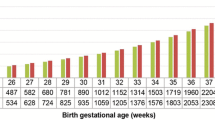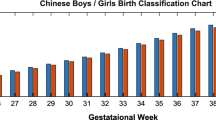Abstract
In recent years, a rapid rise in the incidence of Large for gestational age (LGA) neonate is reported, and health care professionals employed themselves to discover the cause. Utmost of the previous studies were cohort or observational studies that employed simple linear or multivariate regression models, and very few of them employed machine learning (ML) schemes. Therefore, this research proposes to use 1 expert-driven and 7 automated feature selection schemes with well-known ML classifiers using 10 and 30 folds cross-validation. The induced results were compared with existing baselines, and Wilcoxon signed-rank test and the Friedman test were also introduced to verify the results. The ranked 20 features of the proposed expert-driven feature selection scheme outperformed amongst 7 automated feature selection schemes with a prediction precision, accuracy, and AUC scores of 0.94606, 0.84529, and 0.86492, respectively. Out of twenty features, eleven features were found similar to twenty ranked features of the automated feature selection schemes subsets. The classification results of the extracted features were utmost identical to the results of twenty features subset proposed by the expert-driven feature selection scheme. Therefore, we suggest pediatricians to refresh LGA diagnosis process with the proposed scheme because of its practical usage and maximum expert involvement.


















Similar content being viewed by others
References
Adankon MM, Cheriet M, Biem A (2009) Semisupervised least squares support vector machine. IEEE Trans Neural Netw 20(12):1858–1870
Ai K, Zhang J, Dagvadorj A, Hirayama F, Shibuya K, Souza JP, Gulmezoglu AM (2013) Macrosomia in 23 developing countries: an analysis of a multicountry, facility-based, cross-sectional survey. Lancet 381(9865):476–483
Akhtar F, Li J, Azeem M, Chen S, Pan H, Wang Q, Yang J-J (2019) Effective large for gestational age prediction using machine learning techniques with monitoring biochemical indicators. The Journal of Supercomputing
Bammann K (2006) Statistical models: Theory and practice. Biometrics 62 (3):943–943
Battaglia FC, Lubchenco LO (1967) A practical classification of newborn infants by weight and gestational age. J Pediatr 71(2):159–163
Blue NR, Jmp Y, Holbrook BD, Nirgudkar PA, Mozurkewich EL (2017) Abdominal circumference alone versus estimated fetal weight after 24 weeks to predict small or large for gestational age at birth A meta-analysis. Am J Perinatol 34 (11):1115–1124
Boney CM, Verma A, Tucker R, Vohr BR (2005) Metabolic syndrome in childhood: association with birth weight, maternal obesity, and gestational diabetes mellitus. Pediatrics 115(3):290–6
Breiman L (2001) Random forests. Mach Learn 45(1):5–32
Chen Q, Wei J, Tong M, Yu L, Lee AC, Gao YF, Zhao M (2015) Associations between body mass index and maternal weight gain on the delivery of lga infants in chinese women with gestational diabetes mellitus. J Diabet Compl 29 (8):1037–1041
Chiavaroli V, Castorani V, Guidone P, Derraik JGB, Liberati M, Chiarelli F, Mohn A (2016) Incidence of infants born small- and large-for-gestational-age in an italian cohort over a 20-year period and associated risk factors. Ital J Pediatr 42(1):1–7
Chou Y-H, Tiu C-M, Hung G-S, Wu S-C, Chang TY, Chiang HK (2001) Stepwise logistic regression analysis of tumor contour features for breast ultrasound diagnosis. Ultrasound Med Biol 27(11):1493–1498
Dietz WH (2004) Overweight in childhood and adolescence. N Engl J Med 350 (9):855–857
Dyer JS, Rosenfeld CR, Rice J, Rice M, Hardin DS (2007) Insulin resistance in hispanic large-for-gestational-age neonates at birth. Early Hum Dev 83 (10):S138–S138
Faucher MA, Barger MK (2015) Gestational weight gain in obese women by class of obesity and select maternal/newborn outcomes: a systematic review. Women Birth 28(3):e70–e79
Guyon I, Elisseeff A (2003) An introduction to variable and feature selection. J Mach Learn Res 3:1157–1182
Haipin SS, Zhang QW (2015) Design implementation and significance of chinese free pre-pregnancy eugenics checks projec. Natl Med J China 95(3):162–165
Hameed SS, Rawal I, Soni D, Ajay VS, Goenka S, Prabhakaran D (2016) Technology for diagnosis, treatment, and prevention of cardiometabolic disease in india. Prog Cardiovasc Dis 58(6):620–629
Hannaford KE, Tuuli MG, Odibo L, Macones GA, Odibo AO (2017) Gestational weight gain: association with adverse pregnancy outcomes. Amer J Perinatol 34(02):147–154
Harper LM, Jauk VC, Owen J, Biggio JR (2014) The utility of ultrasound surveillance of fluid and growth in obese women. Amer J Obstetr Gynecol 211(5):524.e1–524.e8
Henriksen T (2011) The macrosomic fetus: a challenge in current obstetrics. Acta Obstetr Gynecol Scand 87(2):134–145
Ingrid WMD, Axelsson O, Bergstrom R (2011) Maternal factors associated with high birth weight. Acta Obstetr Gynecol Scand 70(1):55–61
Júnior EA, Peixoto AB, Zamarian ACP, Júnior JE, Tonni G (2017) Macrosomia. Best Pract Res Clin Obstetr Gynaecol 38:83–96
Khambalia AZ, Algert CS, Bowen JR, Collie RJ, Roberts CL (2017) Long-term outcomes for large for gestational age infants born at term. J Paediat Child Health 53(9):876–881
Kominiarek MA, Grobman W, Adam E, Buss C, Culhane J, Entringer S, Simhan H, Wadhwa PD, Kim K-Y, Keenan-Devlin L et al (2018) Stress during pregnancy and gestational weight gain. J Perinatol 38(5):462–467
Kuciene R, Dulskiene V, Medzioniene J (2017) Associations between high birth weight, being large for gestational age, and high blood pressure among adolescents: a cross-sectional study. Eur J Nutr 57(1):1–9
Kullback S, Leibler RA (1951) On information and sufficiency. Ann Math Stat 22(1):79–86
Kursa MB, Jankowski A, Rudnicki WR (2010) Boruta–a system for feature selection. Fund Inf 101(4):271–285
Lazer S, Biale Y, Mazor M, Lewenthal H, Insler V (1986) Complications associated with the macrosomic fetus. J Reprod Med 31(6):501–505
Li J, Akhtar F, Guan Y (2018) Monitoring bio-chemical indicators using machine learning techniques for an effective large for gestational age prediction model with reduced computational overhead. The 7th International Conference on Frontier Computing (FC 2018) - Theory Technologies and Applications
Li J, Lu L, Zhou MC, Ji JY, Chen S, Liu HT, Wang Q, Pan H, Sun ZH, Tan F (2018) Feature selection and prediction of small-for-gestational-age infants. Journal of Ambient Intelligence and Humanized Computing:1–15
Luangkwan S, Vetchapanpasat S, Panditpanitcha P, Yimsabai R, Subhaluksuksakorn P, Loyd RA, Uengarporn N (2015) Risk factors of small for gestational age and large for gestational age at buriram hospital. J Med Assoc Thai 98 (Suppl 4):S71–S78
Mendez-Figueroa H, Truong VT, Pedroza C, Chauhan SP (2017) Large for gestational age infants and adverse outcomes among uncomplicated pregnancies at term. Am J Perinatol 34(07):655–662
Menze BH, Kelm MB, Masuch R, Himmelreich U, Bachert P, Petrich W, Hamprecht FA (2009) A comparison of random forest and its gini importance with standard chemometric methods for the feature selection and classification of spectral data. Bmc Bioinform 10(1):1–16
Meshari AA, De Silva S, Rahman I (1990) Fetal macrosomia, maternal risks and fetal outcome. Int J Gynecol Obstetr 32(3):215–222
Modinat M, Abimbola A, Abdullateef B, Opeyemi A (2015) Gain ratio and decision tree classifier for intrusion detection. Int J Comput Appl 126(11):975–8887
Moore GS, Kneitel AW, Walker CK, Gilbert WM, Xing G (2012) Autism risk in small- and large-for-gestational-age infants. Amer J Obstetr Gynecol 206(4):314.e1–314.e9
Murtaza G, Shuib L, Mujtaba G, Raza G (2019) Breast cancer multi-classification through deep neural network and hierarchical classification approach. Multimedia Tools and Applications:1–31
Murtaza G, Shuib L, Wahab AWA, Mujtaba G, Raza G, Azmi NA (2019) Breast cancer classification using digital biopsy histopathology images through transfer learning. In: Journal of Physics: Conference Series, vol 1339(1):012035. IOP Publishing
Murtaza G, Shuib L, Wahab AWA, Mujtaba G, Nweke HF, Al-garadi MA, Zulfiqar F, Raza G, Azmi NA (2019) Deep learning-based breast cancer classification through medical imaging modalities: state of the art and research challenges. Artificial Intelligence Review:1–66
Murtaza G, Shuib L, Wahab AWA, Mujtaba G, Raza G (2020) Ensembled deep convolution neural network-based breast cancer classification with misclassification reduction algorithms. Multimedia Tools and Applications:1–33
Pearson K (1900) On the criterion that a given system of deviations from the probable in the case of a correlated system of variables is such that it can be reasonably supposed to have arisen from random sampling. Phil Mag 50(302):157–175
Piper LK, Stewart Z, Murphy HR (2017) Gestational diabetes. Obstetr Gynaecol Reprod Med 27(6):171–176
Shen Y, Zhao W, Lin J, Liu F (2017) Accuracy of sonographic fetal weight estimation prior to delivery in a chinese han population. J Clin Ultrasound 45 (8):465–471
Shmueli A, Nassie DI, Hiersch L, Ashwal E, Wiznitzer A, Yogev Y, Aviram A (2017) 1241: Prerecognition of large for gestational age (lga) fetus and its consequences 216:S150–S151, 01
Taal HR, Vd Heijden AJ, Steegers EA, Hofman A, Jaddoe VW (2013) Small and large size for gestational age at birth, infant growth, and childhood overweight. Obesity 21(6):1261–1268
Van Assche FA, Devlieger R, Harder T, Plagemann A (2010) Mitogenic effect of insulin and developmental programming. Diabetologia 53(6):1243–1243
Wikstrom I, Axelsson O, Bergstrom R, Meirik O (2011) Traumatic injury in large-for-date infants. Acta Obstetr Gynecol Scand 67(3):259–264
Wolpert DH, Macready WG et al (1995) No free lunch theorems for search. Technical report, Technical Report SFI-TR-95-02-010. Santa Fe Institute
Xu H, Simonet F, Luo ZC (2010) Optimal birth weight percentile cut-offs in defining small- or large-for-gestational-age. Acta Paidiatrica 99(4):550–555
Zhang H, Su J (2004) Naive bayesian classifiers for ranking. In European conference on machine learning. Springer, pp 501–512
Zhu L, Zhang R, Zhang S, Shi W, Yan W, Wang X, Lyu Q, Liu L, Zhou Q, Qiu Q (2015) Chinese neonatal birth weight curve for different gestational age. Zhonghua Er Ke Za Zhi 53(2):97–103
Acknowledgments
This work is supported by the National Key Research and Development Program of China with project no.2017YFB1400803.
Author information
Authors and Affiliations
Corresponding authors
Additional information
Publisher’s note
Springer Nature remains neutral with regard to jurisdictional claims in published maps and institutional affiliations.
Rights and permissions
About this article
Cite this article
Akhtar, F., Li, J., Pei, Y. et al. Diagnosis of large-for-gestational-age infants using a semi-supervised feature learned from expert and data. Multimed Tools Appl 79, 34047–34077 (2020). https://doi.org/10.1007/s11042-020-09081-4
Received:
Revised:
Accepted:
Published:
Issue Date:
DOI: https://doi.org/10.1007/s11042-020-09081-4




